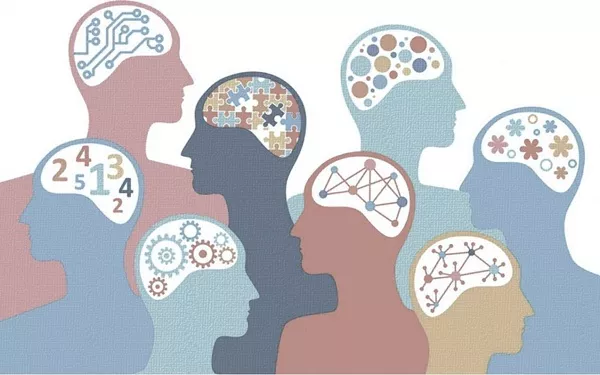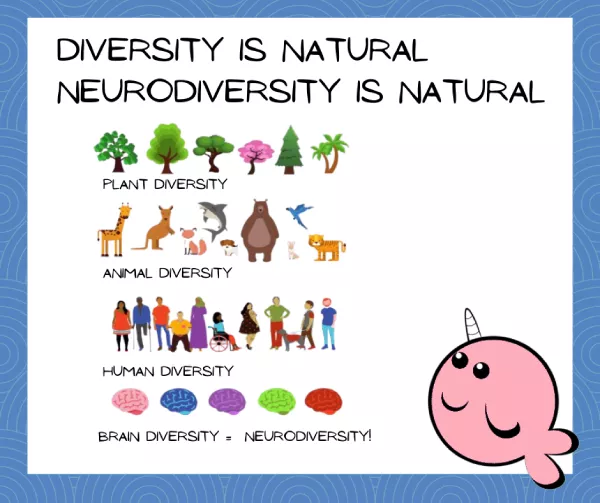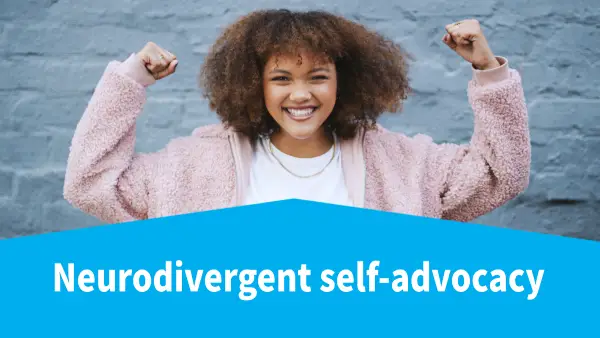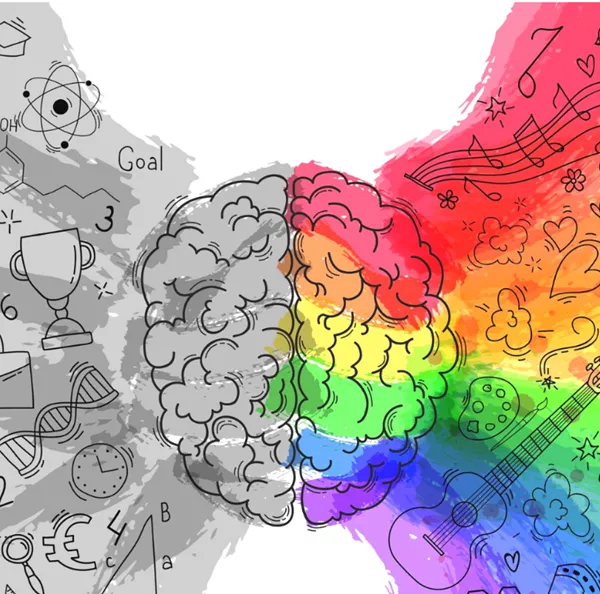What is Neurodiversity? Understanding the Basics
You've likely heard the term "neurodiversity" popping up more frequently in conversations, online articles, and discussions about human differences. But what is neurodiversity? Understanding the core neurodiversity meaning is crucial for fostering acceptance and building more inclusive environments. This guide provides a foundational understanding of this important concept, exploring its origins, core principles, and significance today. It’s important to remember from the outset that understanding neurodiversity is about appreciating human variation, not about seeking or confirming a diagnosis. If you're beginning your journey to learn more, you can explore more about neurodiversity basics here.

Defining Neurodiversity: More Than Just a Buzzword
So, what exactly is the neurodivergence definition? At its heart, neurodiversity is the concept that differences in brain function and behavioral traits are a natural part of human variation. It challenges the long-held view that there is only one "right" or "normal" way for a brain to work. Instead, it posits that diverse neurological conditions are authentic human variations rather than pathologies to be cured.
Neurodiversity as Natural Human Variation
Think of human variation like biodiversity. Just as a variety of plants and animals strengthens an ecosystem, a diversity of minds enriches human society. Neurodiversity suggests that conditions often labeled as disorders, such as Autism, ADHD, Dyslexia, and others, are simply different ways of thinking, learning, perceiving, and interacting with the world. This perspective shifts the focus from deficits to differences and potential strengths associated with these neurological variations. How to understand neurodiversity begins with accepting this fundamental premise.

Moving Beyond the Medical Model: A Social Perspective
Traditionally, neurological differences have been viewed through a medical model, focusing on deficits and impairments. The neurodiversity paradigm, however, largely aligns with the social model of disability. This model suggests that disability often arises not from the individual's condition itself, but from societal barriers – physical, attitudinal, communication, and social – that exclude people with differences. Understanding neurodiversity means recognizing that challenges faced by neuro-divergent individuals often stem from environments not designed to accommodate their needs, rather than inherent flaws.
What Neurodiversity Is Not (Common Misconceptions)
It's equally important to clarify what neurodiversity is not. It isn't a synonym for specific conditions like autism, though autistic individuals were central to its development. It’s an umbrella term encompassing various neurological differences. Critically, is neurodiversity a diagnosis? No, it is a framework, a perspective, and a movement advocating for acceptance and inclusion. It doesn't replace the need for professional assessment or diagnosis for individuals seeking support or accommodations, but it reframes how those differences are understood.
The Origin and Evolution of the Neurodiversity Concept
Where did this concept originate? Understanding its roots helps grasp its significance.
Coining the Term: Judy Singer's Contribution
The term "neurodiversity" is widely credited to Australian sociologist Judy Singer in the late 1990s . Singer, who identified as being on the autism spectrum herself, used the term to advocate for the rights and inclusion of people with neurological differences, drawing parallels with concepts like biodiversity and cultural diversity. Her work aimed to shift the conversation away from cure towards acceptance and accommodation.
Roots in the Disability Rights Movement
The neurodiversity movement didn't emerge in a vacuum. It has strong ties to the broader disability rights movement, which has long fought for the rights, dignity, and inclusion of people with disabilities. It builds upon the principles of self-advocacy and challenges societal norms that marginalize those who differ from the majority. The movement emphasizes "nothing about us without us," ensuring neurodivergent voices lead the conversation.
How Understanding Has Evolved Over Time
Since the late 90s, the understanding neurodiversity concept has gained significant traction. Initially focused heavily on autism, the umbrella now more widely includes ADHD, Dyslexia, Tourette Syndrome, Dyspraxia, and other neurological variations. The focus has expanded from simple acceptance to actively promoting inclusive practices in education, workplaces, and society at large, recognizing the unique strengths and perspectives neuro-divergent individuals bring. You can discover resources on neurodiversity history on our site.
Core Principles of the Neurodiversity Movement
Several core principles underpin the neurodiversity movement.
Acceptance and Respect for Neurological Differences
The fundamental principle is the acceptance and respect for neurological differences as natural human variations. It rejects the idea that neurodivergent individuals need to be "fixed" or forced to conform to neurotypical standards. Instead, it calls for celebrating diversity and appreciating different ways of thinking and being.
Viewing Differences as Part of a Spectrum
Neurodiversity emphasizes that neurological traits exist on a spectrum. There isn't a clear dividing line between "neurotypical" and "neurodivergent." Many traits overlap, and individuals experience their neurotype uniquely. This perspective discourages rigid categorization and promotes a more nuanced understanding of human variation.
Focusing on Strengths Alongside Challenges
While acknowledging that neurological differences can present challenges, particularly in unaccommodating environments, the neurodiversity movement also highlights the unique strengths, talents, and perspectives often associated with various neurotypes. This balanced view moves away from a purely deficit-focused model.
The Importance of Self-Advocacy
Empowering neuro-divergent individuals to speak for themselves and advocate for their own needs (self-advocacy) is central. The movement prioritizes lived experience and challenges external interpretations that may pathologize or misunderstand neurodivergent ways of being.

Neurodiversity vs. Neurotypical: Understanding the Difference
To fully grasp neurodiversity, it helps to understand its counterpart: neurotypical.
Defining "Neurotypical": The Societal Standard
"Neurotypical" refers to individuals whose brain functions, neurological processing, and behavioral traits fall within the range considered "typical" or standard by society. It's essentially the neurological majority. The neurotypical definition isn't about being "better" or "normal" in an absolute sense, but rather representing the most common neurological configuration around which societal structures are often built.
Key Differences in Processing and Interaction (General Overview)
What qualifies neurodivergent often involves differences in information processing, communication styles, social interaction preferences, sensory experiences, and learning methods compared to neurotypical individuals . These cognitive styles are simply different, not inherently deficient. For instance, some neurodivergent individuals might excel at pattern recognition but find navigating certain social nuances challenging, or vice-versa.
Emphasizing Difference, Not Deficit
The core distinction emphasized by the neurodiversity framework is difference, not deficit. While neurotypical describes the common neurological baseline, neurodivergent describes variations from that baseline. Neither is inherently superior. Understanding neurodiversity involves appreciating these differences as valid parts of the human experience. If you're curious about where you might fit, learning about different traits can be a starting point.
Why Understanding Neurodiversity Matters Today
Why is this conversation so important now? Why is neurodiversity important?
Reducing Stigma and Promoting Inclusion
Understanding and embracing neurodiversity helps reduce the stigma often associated with neurological differences. When differences are seen as natural variations rather than flaws, it fosters greater inclusion and acceptance in schools, workplaces, and communities. This creates environments where everyone feels valued and can participate fully.

Informing Better Support Systems (Education, Workplace)
Recognizing diverse cognitive styles and needs allows for the development of more effective and equitable support systems. This includes adapting teaching methods in education, designing more flexible and accommodating workplaces, and tailoring communication strategies to better suit diverse neurological differences.
Fostering Self-Acceptance and Understanding
For individuals who identify as neuro-divergent, the neurodiversity framework can be incredibly validating. It provides a language and a perspective that affirms their experiences and helps them understand themselves outside of a purely medical or deficit-based lens, fostering self-acceptance.
Building More Empathetic Communities
Ultimately, understanding neurodiversity contributes to building more empathetic and compassionate communities. When we appreciate the vast spectrum of human experience and recognize the validity of different ways of thinking and being, we create a richer, more tolerant society for everyone.
Embracing Neurodiversity: Key Takeaways for Understanding
Neurodiversity is a powerful and necessary shift in perspective. It moves us away from viewing neurological differences as problems to be solved and towards appreciating them as integral parts of human diversity. Key takeaways include recognizing neurodiversity as natural variation, understanding its roots in social justice, appreciating the focus on strengths, and acknowledging the importance of acceptance and inclusion.
This understanding forms the bedrock for exploring specific neurotypes, considering individual experiences, and fostering truly inclusive environments. Remember, this article serves as a foundational guide to the concept of neurodiversity; it is not a tool for self-diagnosis.
Continue your learning journey by exploring common neurotypes in our next article, or browse our resources for more information. If this topic sparks personal reflection, remember that online tools, like the preliminary self-exploration quiz offered here, are just one small step in a much larger journey of understanding. Professional guidance is essential for accurate assessment.
Frequently Asked Questions About Neurodiversity Basics
What does 'neurodivergent' actually mean? 'Neurodivergent' refers to an individual whose brain functions in ways that diverge significantly from the dominant societal standards of "normal" or neurotypical. It's an umbrella term encompassing various neurological conditions.
Is neurodiversity a medical diagnosis? No, neurodiversity itself is not a medical diagnosis. It's a social and biological concept and a framework for understanding neurological differences. Specific conditions under the neurodiversity umbrella (like Autism or ADHD) do have diagnostic criteria used by professionals.
How is neurodiversity different from the concept of disability? Neurodiversity is related to the social model of disability. It suggests that many challenges faced by neurodivergent people arise from societal barriers, not just the neurological difference itself. While some neurodivergent individuals identify as disabled, others may not, depending on their experiences and the context. The key is that neurodiversity views the difference itself as a natural variation.
Where did the term 'neurodiversity' come from? The term is widely credited to sociologist Judy Singer in the late 1990s, emerging from the autistic rights movement and drawing parallels with biodiversity and cultural diversity to advocate for acceptance.
Why is using respectful language around neurodiversity important? Respectful, person-first or identity-first language (depending on individual preference) acknowledges the dignity and validity of neurodivergent experiences. It helps combat stigma and promotes understanding and inclusion. Using terms accurately, as discussed in resources like those found when you explore neurodiversity concepts, is crucial.